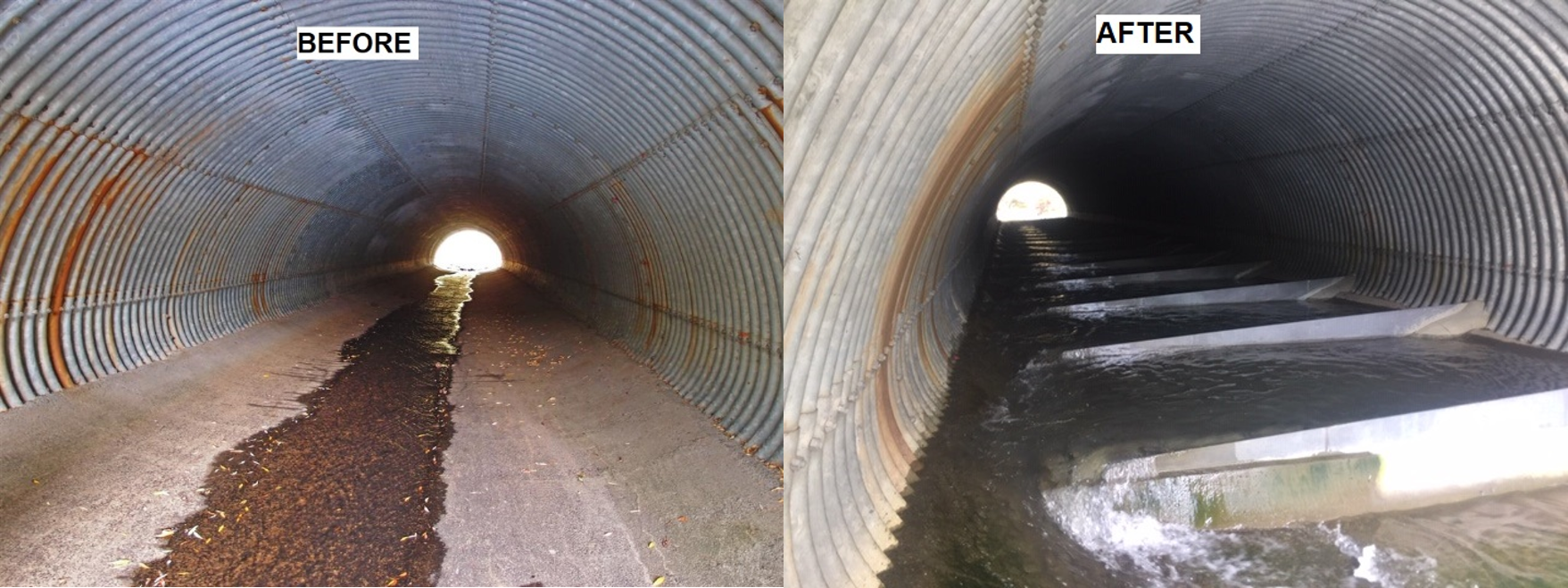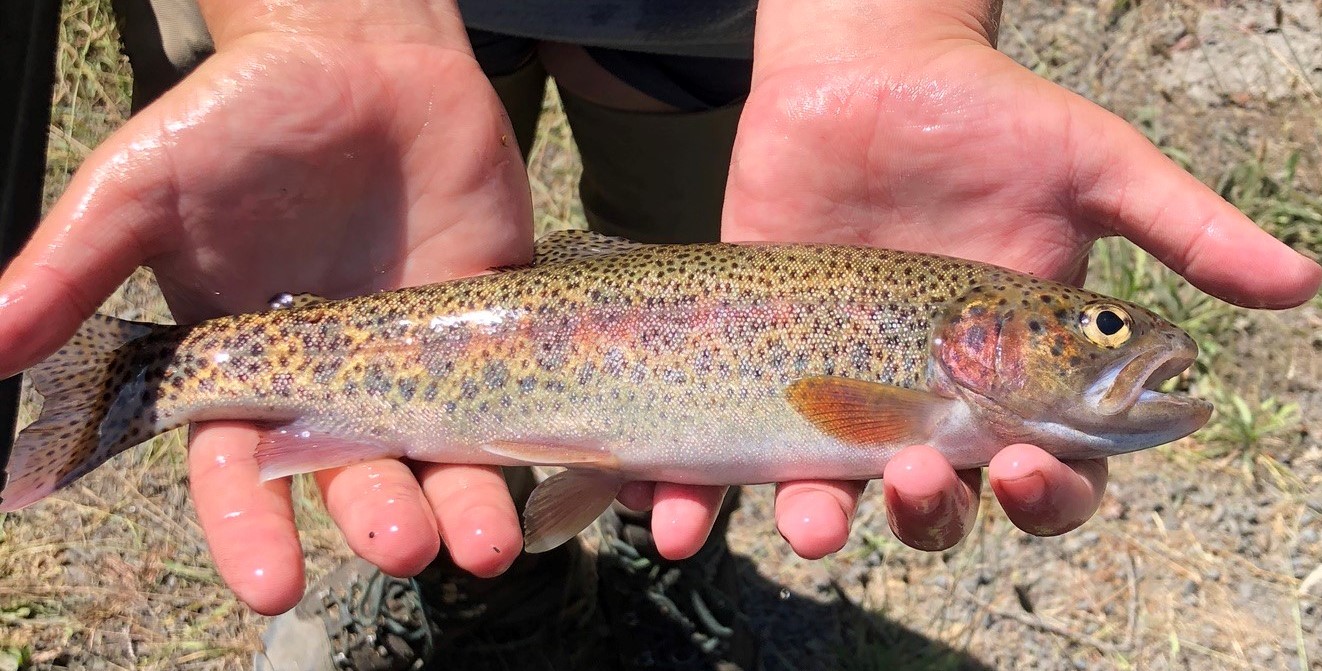The Potlatch River is home to one of the largest wild steelhead populations in the lower Clearwater River. Even though wild steelhead are present, Idaho Fish and Game and a variety of other agency partners and private landowners are working to get even more wild steelhead there in the future.
Give them passage
Big Meadow Creek is the main tributary to the West Fork of Little Bear Creek which contains the highest numbers of juvenile steelhead in the Potlatch River watershed. A 170 ft. long cement lined culvert near the mouth of Big Meadow Creek acted as a passage barrier to steelhead and restricted access to an additional 6 miles of spawning and rearing habitat in Big Meadow Creek. Because of monitoring efforts in the Potlatch River, the culvert was identified as a potential issue and an assessment of the culvert determined it was in fact blocking steelhead migration. In the fall 2018, passage at the culvert was improved by installing steel baffles inside the culvert to slow flows during high spring runoff and to increase water depth in the culvert at low flows. These changes allowed adult steelhead to swim upstream to valuable spawning habitat.

Passage Success?
Rainbow trout and steelhead trout are the same species with two life history forms. Steelhead go to the ocean and rainbow trout reside in streams their whole life. Both forms have been observed in the Potlatch River. Prior to this project, there were primarily resident rainbow trout in Big Meadow Creek upstream of the culvert. We assumed we would see a shift from rainbow trout to steelhead in Big Meadow Creek after the culvert modification, indicating the project was successful in improving access for steelhead into Big Meadow Creek.

In order to assess this, we collected genetic samples from juvenile trout in Big Meadow Creek during 2018 prior to the completion of the culvert modifications and in 2019 and 2020 after completion of the project. The figure below illustrates the changes we observed in the genetic makeup of juvenile trout in Big Meadow Creek before (2018) and after (2019 and 2020) the culvert modifications.
Return of Steelhead
In each year, each vertical bar denotes an individual fish and the colors correspond to the proportion of genetic ancestry. Blue bars mean resident rainbow trout ancestry and green bars mean steelhead ancestry. In 2018, most of the samples assigned to the resident group (blue bars), meaning they were offspring of rainbow trout parents, with minimal steelhead ancestry in the samples. In 2019, more individuals assigned to the steelhead ancestry (green bars) and by 2020 the majority of samples assigned to the steelhead genetic group, meaning they were offspring of steelhead parents. These results clearly showed the genetic composition of juveniles sampled in Big Meadow Creek changed in just two years and the project was successful in improving steelhead passage into Big Meadow Creek.

In addition to culvert baffle project, three additional smaller culverts were replaced upstream in Big Meadow Creek insuring steelhead access to the entire watershed. The removal of passage barriers is just one of the techniques IDFG and other agencies are using to improve wild steelhead habitat in the Potlatch River. For more information on habitat restoration and fish monitoring activities in the Potlatch River and elsewhere in Idaho see:
For more information on Idaho's Wild Salmon and Steelhead click here.
